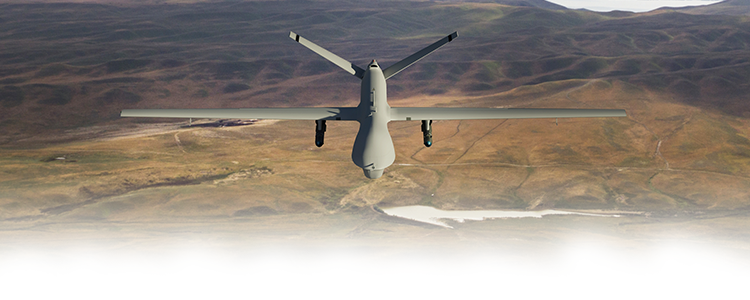On July 11, 2018, COMSAT supported the first medium-altitude, long-endurance (MALE) Remotely Piloted Aircraft (RPA) transatlantic flight through controlled airspace. COMSAT’s terrestrial network provided secure, robust connectivity to ensure General Atomics Aeronautical Systems, Inc. (GA ASI) maintained constant communications with its MQ-9B SkyGaurdian. The landmark 24-hour flight of from North Dakota to the Fairford, UK marks ten years of COMSAT’s support for the command and control communications to the US Government’s most vital drone capabilities. This momentous event marks a huge milestone in RPA advancement, but it also leads to questions about how business aviation will be affected by their increased presence in managed airspace.
Until recently, manned and unmanned aircraft were segregated due to safety concerns. However, RPAs have become a very important source of overhead intelligence, surveillance, and reconnaissance data gathering, and they are also playing an increased role in civil security missions, such as maritime search and rescue and environmental monitoring. The increased use of RPAs combined with the increase in commercial and business aviation traffic ultimately results in a competition for airspace, which is why military organizations are taking steps for RPAs to meet civil aviation standards.
Critical to merging manned and unmanned aircraft in the same airspace is the evolving requirement for highly reliable Command and Control links, in which COMSAT has played a leading role over the years. Using SwiftBroadband, COMSAT has accumulated over half a million flight hours on scores of RPA platforms. The Command and Control link enables RPA pilots thousands of miles away from the aircraft to maintain control, update flight plans, and even speak to other aircraft in the same airspace. The SkyGuardian’s flight across the Atlantic Ocean was a perfect example of how the Command and Control links create a safe merger of manned and unmanned aircraft in the same airspace, and COMSAT supported the carefully controlled operation to ensure there was not a hazard to any commercial airliners on the same route.
“Major network operation centers around the world rely on our teleport connectivity, and I am extremely proud of our involvement with this momentous day in aviation,” said COMSAT president David Greenhill. “We serve hundreds of thousands of customers worldwide including governments, military forces, emergency services, border patrols, environmental agencies, and international surveillance organizations. The innovation we have delivered in this sector over the past ten years is just the start of what we can provide. As the demand for RPAs to fly further, for longer time periods, in controlled airspace grows, we will be there to support the secure delivery of crucial mission data,” concludes Greenhill.
